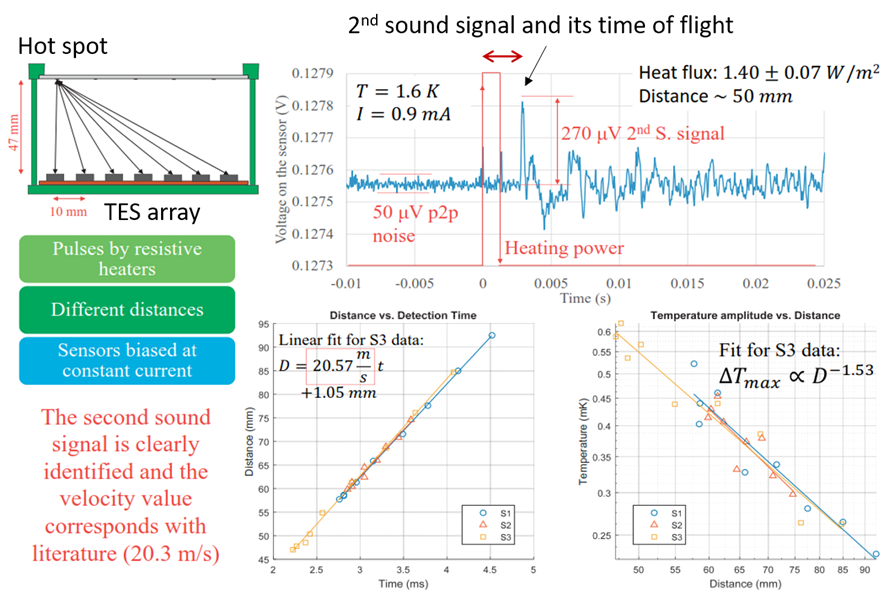Localization of Quench hot spots at SRF cavity surfaces and thin film to substrate interaction

Cooling future SRF cavities by superfluid helium (typically He II at T~1.8 K), has the potential to increase accelerating gradients and enable He II second sound cavity diagnostics. A new type of Transition Edge Sensors (TES) for quench spot localisation has been developed to improve the spatial resolution of the 2nd sound trilateration method due to the much smaller sensing element compared to the established detectors like Oscillating Superleak Transducers (OST). Second sound signals have been successfully measured with TES and a calibration to actual temperature variations of the second sound is possible.
Le refroidissement des futures cavités supraconductrices (typiquement avec l’hélium II à 1,8 K) permet d’augmenter les gradients d’accélération ainsi que le diagnostic des cavités par la méthode du second son. Un nouveau type de capteur (TES) pour la localisation des zones résistives a été développé pour améliorer la résolution spatiale de la méthode de trilatération du second son, grâce à des éléments de détection beaucoup plus petits en comparaison avec les détecteurs type OST. Des mesures de second son ont été réalisées avec ce nouveau type de capteur et une calibration pour les variations réelles de température dans le second son est possible.
